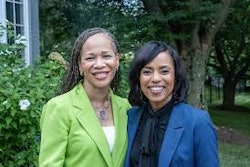WASHINGTON
The Bush administration is giving public schools wider latitude to teach boys and girls separately in what is considered the biggest change to coed classrooms in more than three decades.
After a two-year wait, the Education Department issued final rules Tuesday detailing how it will enforce the Title IX landmark anti-discrimination law. Under the change taking effect Nov. 24, local school leaders will have discretion to create same-sex classes for subjects such as math, a grade level or even an entire school.
“Some students may learn better in single-sex education environments,” said Education Secretary Margaret Spellings. “These final regulations permit communities to establish single-sex schools and classes as another means of meeting the needs of students.”
“Every child should receive a high quality education in America and every school and district deserves the tools to provide it,” she said.
Education officials initially proposed the rules in early 2004, pointing in part to some U.S. research suggesting better student achievement and fewer discipline problems in single-sex classes including math and foreign languages.
After receiving 5,600 public comments, education officials said they were moving forward with the plan with some wording tweaks and assurances from Attorney General Alberto Gonzales that it was legally sound.
Critics who compare the plan to “separate but equal” segregation-era classrooms have not been so sure.
The National Organization for Women says it creates the risk of breeding second-class citizens. The American Association of University Women has said it would “throw out the most basic legal standards prohibiting sex discrimination in education.”
A school board in southeastern Louisiana dropped plans last month to segregate two middle schools by sex after meeting with a federal judge and attorneys for the American Civil Liberties Union, which expressed concerns about the plan.
Since current rules began in 1975, single-sex classes have been allowed only in limited cases, such as sex education courses or gym classes involving contact sports.
Under the new rules, schools could separate genders for a variety of subjects if they believed it offered educational benefits, such as promoting greater student comfort or higher attendance. In all cases, enrollment in a single-sex class would be voluntary.
If a school creates a single-sex class, it would not be required to offer the other gender its own similar class, but it would have to offer a coed version of it.
The rules also make it easier to create single-sex schools, as long as the district can demonstrate that it also provides coed schools with “substantially equal” benefits to the excluded sex.
The changes affect elementary and secondary education, but not colleges. The current ban on single-sex vocational education in both classes and schools at the K-12 level will remain in effect.
The new regulations also require that school districts evaluated their single-sex classes at least every two years to ensure compliance with the Title IX law.
“The department’s office for civil rights is responsible for investigating any complaints in discrimination. We take that charge very seriously and will continue to fully investigate any allegation,” said Stephanie Monroe, the department’s assistant secretary for civil rights.
Education officials said some districts were interested in single-sex schools but said they do not expect a rush to make wholesale changes. In most cases, local school leaders will probably wait until at least the next semester to ponder moves, they said.
Single-sex classrooms have become more common in recent years. In 1998, only four public schools had them, compared to at least 228 this year, according to the National Association for Single Sex Public Education.
— Associated Press
© Copyright 2005 by DiverseEducation.com


















